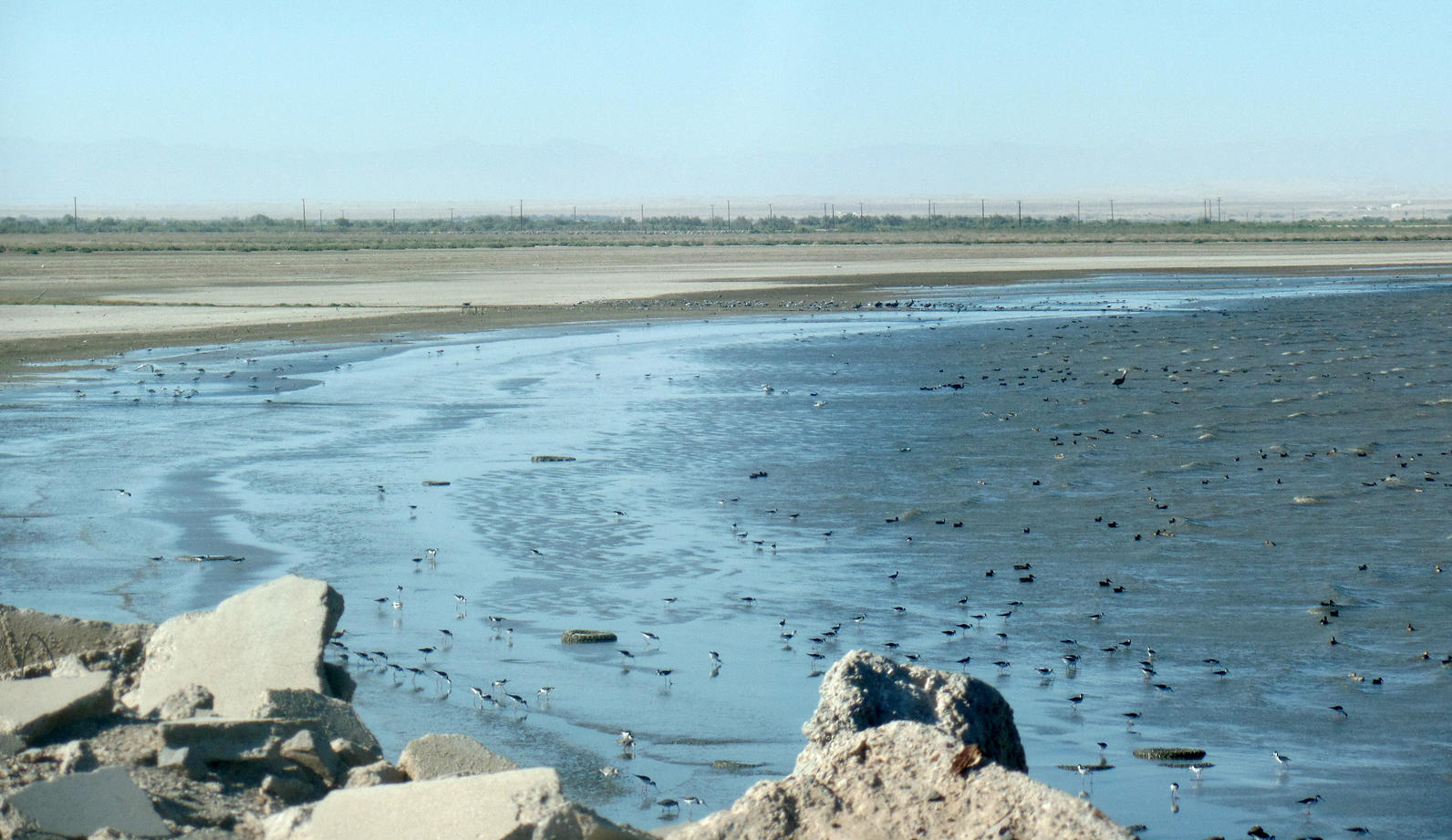
None. That’s how many American White Pelicans I recorded on my semi-monthly Salton Sea waterbird survey last week. Not a handful, not “reduced numbers”, but zero. Of more than a dozen stops I made censusing birds, I couldn’t find a white pelican. There are a few around – eBird shows a few counts of single- and low-double-digits, but none crossed my binocular view.
There were plenty of other birds to look at – hundreds of Western and Least sandpipers foraging in the wet mud of the receding shoreline, a couple thousand Northern Shoveler arriving for the winter in the shallows of the southwestern corner of the sea. But I was expecting at least a few white pelicans. As recently as 2013 and 2014, August and September counts of 500-2000 birds were commonplace at several spots along the sea’s shore, which has been a traditional post-breeding stopover site for birds moving off nesting territories in the Great Basin, some staging before continuing on to wintering grounds in Mexico. It could be they’re late this year, and still staging to the north and northeast.
This year, with climbing salinity hovering near the threshold level that would allow tilapia (the sea’s sole remaining fish species) to reproduce, I was expecting to start seeing the signs of the unraveling of the sea’s ecosystem at some point, with fish-eaters like pelicans and cormorants showing the first signs of this.
There are still fish in the sea – patches of lower-salinity water at agricultural drains and other inputs of fresh water support them, as do areas of deep water where evaporation rates aren’t too high. I did record a few dozen Brown Pelicans (quite a change from the hundreds found in early fall here in prior years) trying to make a go of it, but almost none were diving for fish; rather, they were roosting along the shoreline and on exposed mudbars, maybe trying to conserve energy. I did see an impressive flock of more than 500 Double-crested Cormorants streaming west past the north end of Poe Road at the south end north of Westmorland, presumably looking for a productive fishing area.
I don’t know what the winter will bring for the sea. Some groups of birds will be fine – Northern Shoveler can tolerate salinity levels much higher than that of the sea, and they’ll likely be joined by rafts of Ruddy Duck. Brine-dwelling invertebrates will continue to provide abundant food for these and other waterfowl, and shorebirds alike. Herons and egrets, which once lined up along the shoreline plucking small tilapia out of the shallows, may opt for foraging in flooded agricultural fields, or for the impoundments of the Imperial Wildlife Area (including a newly-constructed mitigation pond stocked with fish, near Niland). Or, they may go elsewhere. Maybe the white pelicans will return – I hope so.
By Daniel S. Cooper
A New Colony of Caspian Tern Decoys on Aramburu Island
Richardson Bay Audubon Center is attacting breeding pairs of Caspian Terns with these newly painted tern decoys—a strategy successfully used by previous tern relocation efforts.




